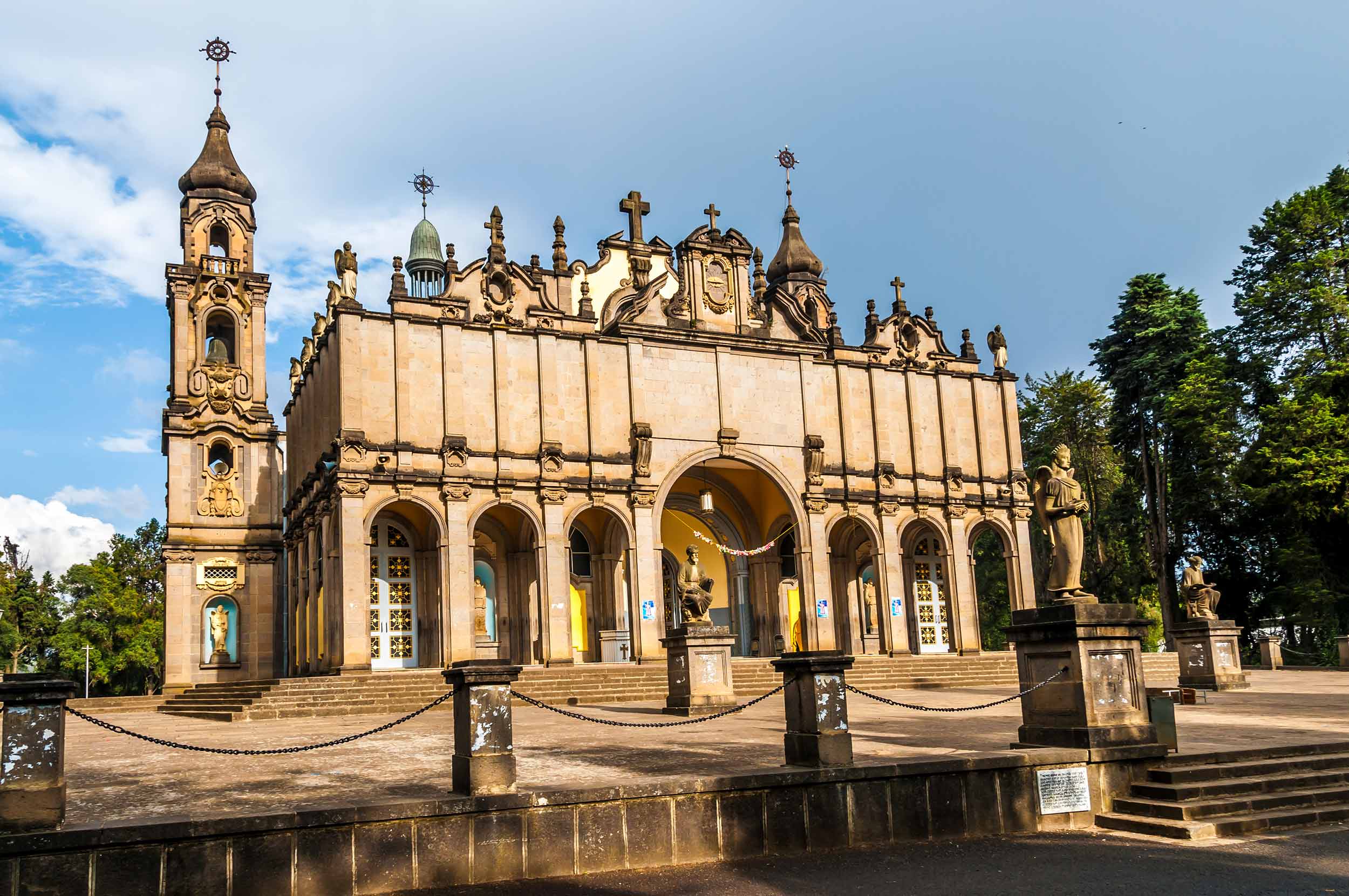Underrated Ruins Of Africa: Great Zimbabwe

When you think of ancient ruins in Africa, odds are you think of the great Pyramids of Giza or the Valley of the Kings. The reality is though, Africa has many more amazing and inspiring ruins throughout the continent. Ruins such as the highly underrated Great Zimbabwe.
The Great Zimbabwe ruins can be found in the south-eastern corner of the country, between the Zambezi and Limpopo Rivers. They are the largest collections of ruins in Africa, outside of Egypt and south of the Sahara. They are what remain of the once capital city of the area.
The city was founded in the 11th century, and lasted for about 4 centuries before being abandoned. The fact that they are still standing is a testament of the incredible architectural skill used to create the city. It was home to a cattle-herding people who also became known for their metal-working skills as well. The ruins are one of several that can be found in the area, but most of the others have long since been ransacked, and the ruins of Great Zimbabwe are by far the largest.
The ruins are on the UNESCO World Heritage list, but it doesn’t attract as much attention of some other ruins in Africa. The area is surrounded by stone walls, and some historians believe that it was once a royal palace, with a population of somewhere between 10,000 – 20,000 people. You will see turrets, towers, platforms and beautifully carved staircases, all of which display the engineering skills used to create the buildings. Not all the ruins are of the palace either. Some of the area shows that a large majority of the people who lived there, lived in extremely poor conditions that resemble that of a modern-day slum.
As for the history of the region, much has been lost. Though many present-day Zimbabweans view it as a source of pride, not a lot can be said about the people who lived there, or why the city eventually fell into obscurity by the 16th century. It does appear that the area was at the epicenter of an industrious southern African empire, trading with other African nations as well as places much further north in Asia such as India, Persia and China, but by the time the Portuguese arrived it had faded away.
A small museum can also be visited when you explore the ruins. inside you will find shards of Persian pottery, a Chinese writing set and brass ornaments from Assam of India. All of the artifacts where found near the ruins and are extremely old.
The Great Zimbabwe ruins are not only fantastic to see, but highly underrated, and well worth visiting on your vacation to the area.
The Rock-Hewn Churches Of Lalibela Are An Ethiopian World Heritage Site You Don’t Want To Miss

In case you didn’t know, Lalibela is a town in the Lasta Amhara Region of Ethiopia famous for its 11 rock-cut monolithic churches. It’s one of the holiest cities in the country, and a center of pilgrimage. Ethiopia of course was one of the earliest nations to adopt Christianity, so this world heritage site is not out of place. The churches themselves date from the 7th to the 13th century, and have been recognized as Unesco world heritage sites since 1978.
The churches, carved from the “living rock” of the earth are thought to have been built by King Lalibela, who aimed to create a ‘New Jerusalem’ after Muslim conquests prevented Christian pilgrimages to the holy land, although the exact date of their construction is not known. The churches can be found on the north and south side of the river Jordan, and all of them are considered by be a unique artistic achievement.
The construction of the churches is truly a marvelous feat, as each were chiselled out of the stone, including the doors, windows, columns, floors, roofs and other parts of the building. Not only does that represent an incredible engineering dream that would have taken a long time to accomplish, but they are all connected to water through a series of drainage ditches, trenches and ceremonial passages. Most of the buildings also have wells next to them that are filled by this system.
The largest of the churches is Biete Medhani Alem (House of the Saviour of the World) on the north side, which is believed to be the largest monolithic church in the world. Each of the buildings are believed to have been used as churches at one time or another, but two of them, Biete Mercoreos (House of St. Mercoreos) and Biete Gabriel Rafael (House of Gabriel Raphael) on the south side of the Jordan, are thought to have been royal residences.
While it is still possible to visit the churches, some of them have started to deteriorate due to water damage and seismic activity. Some of them have serious structural problems as well, and could collapse at any time. The paintings inside the churches have degraded as well, and the sculptures and bas-reliefs have been seriously damaged. This of course means that not everything is able to be visited by tourists.
The rock-hewn churches Of Lalibela are truly a sight to behold, and should accompany any trip to Ethiopia. Cana Creative Travel and Tours offers many packages to the area, including The Historical Route Highlights tour of Ethiopia, which features a day of exploring Lalibela.
Emirates Asks Us ‘Do We Remember?’ In An Incredible New Ad

Instead of focusing on what is happening all around the world at the moment, Emirates has decided to go a different route. They’ve written a brilliant new commercial that asks us Do we Remember?, while focusing on the future.
In the commercial Emirates asks us things such as “do we remember when the schools were closed and our kids tried to learn online”, and “when we first heard the term ‘Social Distancing?’ Of course like all major travel agencies and airlines, Emirates has been hit just as hard by the pandemic. They were shutdown like all of UAE aviation, with the exception of cargo flights. As of April 6th however, the airline has resumed flying to some European destinations such as Brussels, Frankfurt, London, Paris and Zurich. At the moment flights will online be limited to outbound passenger traffic only, in other words getting people back home, but it’s a start.
Emirates new ad is of course the first travel brand to release such a thing, and probably the only one to come out for a while. The minute long ad though is definitely something we all need though, and gives us hope for the future when things can go back to normal. You can watch the entire ad below.
The Ethiopian Coffee Ceremony Is Integral To The Country’s Social And Cultural Life

Coffee is an integral part of daily life in many countries around the world. In fact many people look at the popular brew as an important way to begin their day. To the people of Ethiopia however, it’s even more important.
Coffee originated in Ethiopia, and if you take a moment to speak to the people of the country you are sure to hear the popular story of a goat herder who saw his flock frolicking in the fields after eating raw coffee berries. He told the local monks about the berries, and they flung them into the fire, thinking they were sinful. It was from there they got the idea to brew them and first make the soon to be popular beverage. They started to believe the berries were a blessing that allowed them to stay up later for their holy devotions. If you are looking for a more credible source, you can find mention of it in history books being exported in the late 15th century from Ethiopia to Yeman.
While images of coffee shops and cafes quickly come to mind when you think of a quick cup of Java, the people of Ethiopia and Eritrea are sure to be picturing a more elegant ceremony that they share with their family and and friends over the course of several hours. In some cases the ceremony is conducted three times a day.
The coffee ceremony typically starts with a female member of the family dressed in a traditional white dress with coloured woven borders, spreading fresh flowers and grass on the floor or ground of the house, while burning incense. She then prepares the raw coffee beans by washing them, and cooking them over an open flame (or on a stove) in a long-handled pan. The beans are roasted until they are black and oily, and when they are ready, the host invites the guests over to savor the smell.
The next step in preparing the coffee is to grind the beans using a mortar and pestle, before adding it boiling water. The water would have been boiled in a black clay coffeepot called a jebena as the hostess ground the beans. Even the pouring of the water into the small china cups is important to the ceremony. The hostess holds the jebena high in the air (approximately one foot), away from the cups, so that the when the coffee is poured the grounds are trapped in the bottom of coffeepot. Pouring the coffee is harder than it appears to be, and takes a lot of skill and grace. Not to mention years of practice. Once the coffee is poured, it is served with a heaping spoonful of sugar (or salt, depending on where in the country you are) and fresh popcorn, peanuts or cooked barley to snack on. Each guest usually drinks three cups of coffee from the same grounds (it’s impolite to stop before then), with the third cup saying to bestow a blessing.
If you are invited to attend a coffee ceremony, you should. After all it is considered to be a mark of friendship and respect, and will give you a great sense of Ethiopian hospitality. You will find most parts of Ethiopia conducting the ceremony three times a day, in the morning, at noon and in the evening. And if that’s not enough to convince you of popularity of the drink, an ancient proverb of the region states “Buna dabo naw”, which roughly translates to “Coffee is our bread!”
Addis Ababa — Why You Should Visit The Ethiopian Capital In 2020

Holy Trinity Cathedral in Addis Ababa
In a recent article in the New York Times, Addis Ababa, Ethiopia, was named one of their top places to visit in 2020. There are several reasons this is the case, from a fast-growing economy, to an expanded airport, but perhaps the most important reason is because the capital city was named a 2020 World Capital of Culture and Tourism.
It’s said that coffee originated in Ethiopia, a fact that is constantly on display by the incredible amount of coffee shops and cafes in Addis Ababa, not to mention the women walking the streets with thermos flasks dispensing the tasty quaff. You will find everything in Ethiopia’s largest city, from first class hotels and restaurants, to museums, churches, palaces and shopping centres. Of course one highlight you won’t want to miss is the Mercato, which is one of Africa’s largest, and most colourful markets. The city, which borders the Great Rift Valley, is home to the National Museum, which exhibits Ethiopian art, traditional crafts and prehistoric fossils. You can also see a replica of the famous early hominid Lucy. The Holy Trinity Cathedral is also an attraction you won’t want to miss, as the copper-domed building is the burial place of the 20th-century emperor Haile Selassie. If you are looking for something truly unique, you will want to watch the sun rise from the top of Yeka Hill, which overlooks the area of Megananya on the Eastern side of the city.
Ethiopia’s main airport was once a small transit hub, but after a $363 million renovation is has expanded to three times the size as it gets set to be Africa’s gateway hub. Addis Ababa Bole International Airport now has a capacity of 22 million passengers a year. Getting to Addis from Toronto is even easier, because in November of last year Ethiopian Airlines debuted its Airbus A350 at Toronto Pearson International Airport, and they now fly the route five times a week.
Cana Creative Travel can help you plan your trip to Addis Ababa. Whether you want to visit Ethiopia and check out some of the Historical Route Highlights, take an Ethiopian Cultural Expedition – Omo Valley Tribes, or just explore Addis Ababa on your own, we can help bring your vacation to life. We can also help you find the cheapest flights to Ethiopia. Contact us today at 416-249-0972 or fg@canacreativetravel.com.



